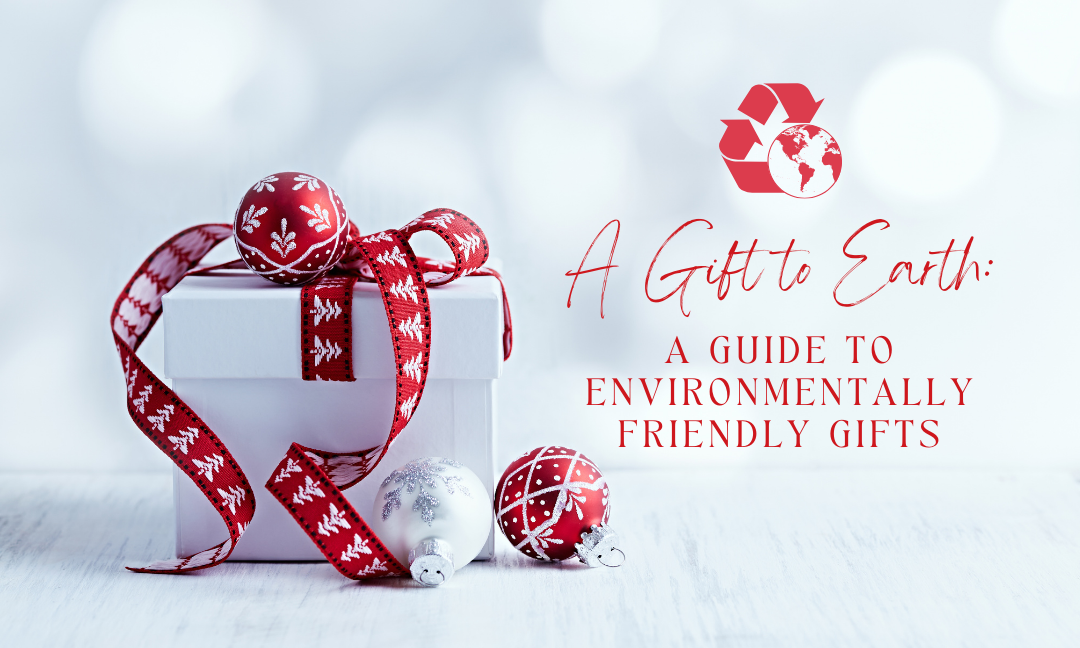Written by: Emily Couture
Originally this post was supposed to be about environmentally friendly gift ideas, but in my research, I found that had been done countless times before. I then realized that most homemade gifts are environmentally friendly… or are they?
To figure out if homemade gifts are environmentally friendly, we first need to define ‘environmentally friendly’. Environmentally friendly means not/minimally harmful to the environment.
Now that we know what environmentally friendly means, we can start looking into the gifts themselves. The first gift category we’ll be looking into is baked goods. One thing that most baked goods have is spices; luckily, it’s really easy to buy spices that are environmentally friendly! Look for a fair trade label on any spices you are purchasing. Another common ingredient in baking is flour. Flour has a relatively low carbon and water footprint, but it can still be harmful to the environment. Non-organic flour threatens wildlife because of the use of pesticides, so be sure to buy organic flour. The final ingredient we’ll be looking into is sugar. Sugar is surprisingly really bad for the environment, if you are curious about why that is, check out this article: https://foodprint.org/blog/ethical-sugar/. The most environmentally friendly option for sugar is organic, fair trade sugar.
The next category we’ll be looking into is crocheted/knitted goods. Whether you’re knitting or crocheting, you will need yarn. There are many different types of yarn and the effects on the environment can vary. When buying yarn try to buy natural ones (natural yarns are yarns made from fibres naturally occurring in the environment). Natural yarns can biodegrade quite fast and there are no manufacturing emissions! Natural yarns can get very expensive very fast, so if a natural yarn is out of the budget consider a blend of acrylic and natural yarn. Natural yarns produce higher quality items, so if you knit or crochet with them you will not only be helping the environment, but you will also get to enjoy your item longer. The only other thing you need to knit or crochet is a crochet hook/knitting needles (depending on the project) and those are environmentally friendly! Knitting needles and crochet hooks last a very long time and are pretty sturdy most of the time, as long as they aren’t broken, they can be reused! So as long as you aren’t constantly replacing them with new needles/hooks, you are not harming the environment!
The final gift category we’ll be looking into is gift accessories! Most of the time, gifts come with a card. Cards are recyclable as long as they don’t have any extra stuff on them (e.g. glitter, a music player, glossy materials). You can even buy biodegradable cards that have seeds in them! You can’t readily find a biodegradable card with seeds, but you can easily make one from seed paper. Here is a great tutorial on how to make seed paper: https://www.naturesseed.com/blog/how-to-make-plantable-seed-paper/ . The final item we’ll be looking into is wrapping paper/gift bags. Wrapping paper is not good for the environment. Fortunately there are plenty of great substitutes. You can find wrapping paper made from recycled materials, ones that have seeds (similar to the aforementioned seed paper cards), and ones that are reusable. One thing that I like to do when giving gifts is to get a cute, reusable tote bag and wrap it in that. By doing that you are not only helping the environment, but you are also giving them a cute bag!
I encourage everyone to gift environmentally friendly this holiday season. If you are unsure about the effects something may have on the environment, look it up and research alternatives if it isn’t. Happy holidays!
Sources:
https://dictionary.cambridge.org/dictionary/english/environmentally-friendly
https://en.wikipedia.org/wiki/Environmentally_friendly
https://homeguides.sfgate.com/ecofriendly-mean-78718.html
https://theecologist.org/2011/may/24/spices-true-cost-kitchen-staple
https://fairtradecampaigns.org/2017/04/fair-trade-enviro-impact/
https://healabel.com/f-ingredients/flour
https://www.bobsredmill.com/blog/healthy-living/is-organic-really-better/
https://flouracademy.com/is-organic-flour-better/
https://foodprint.org/blog/ethical-sugar/
https://ecocult.com/the-best-sustainable-and-ethical-knitting-yarns-for-your-next-project/
https://www.darngoodyarn.com/blogs/darn-good-blog/acrylic-yarn-vs-natural-yarn-environmental-impact


fantastic publish, very informative. I’m wondering why the other specialists of this sector do not notice this. You should proceed your writing. I’m confident, you’ve a huge readers’ base already!
Hey I am so happy I found your site, I really found you by mistake,
while I was browsing on Aol for something else, Nonetheless I am here now and would
just like to say cheers for a remarkable post and a all round entertaining blog (I also
love the theme/design), I don’t have time to read through it all at
the minute but I have saved it and also added your RSS feeds, so when I have
time I will be back to read more, Please do keep
up the great b.
My webpage; tracfone 2022